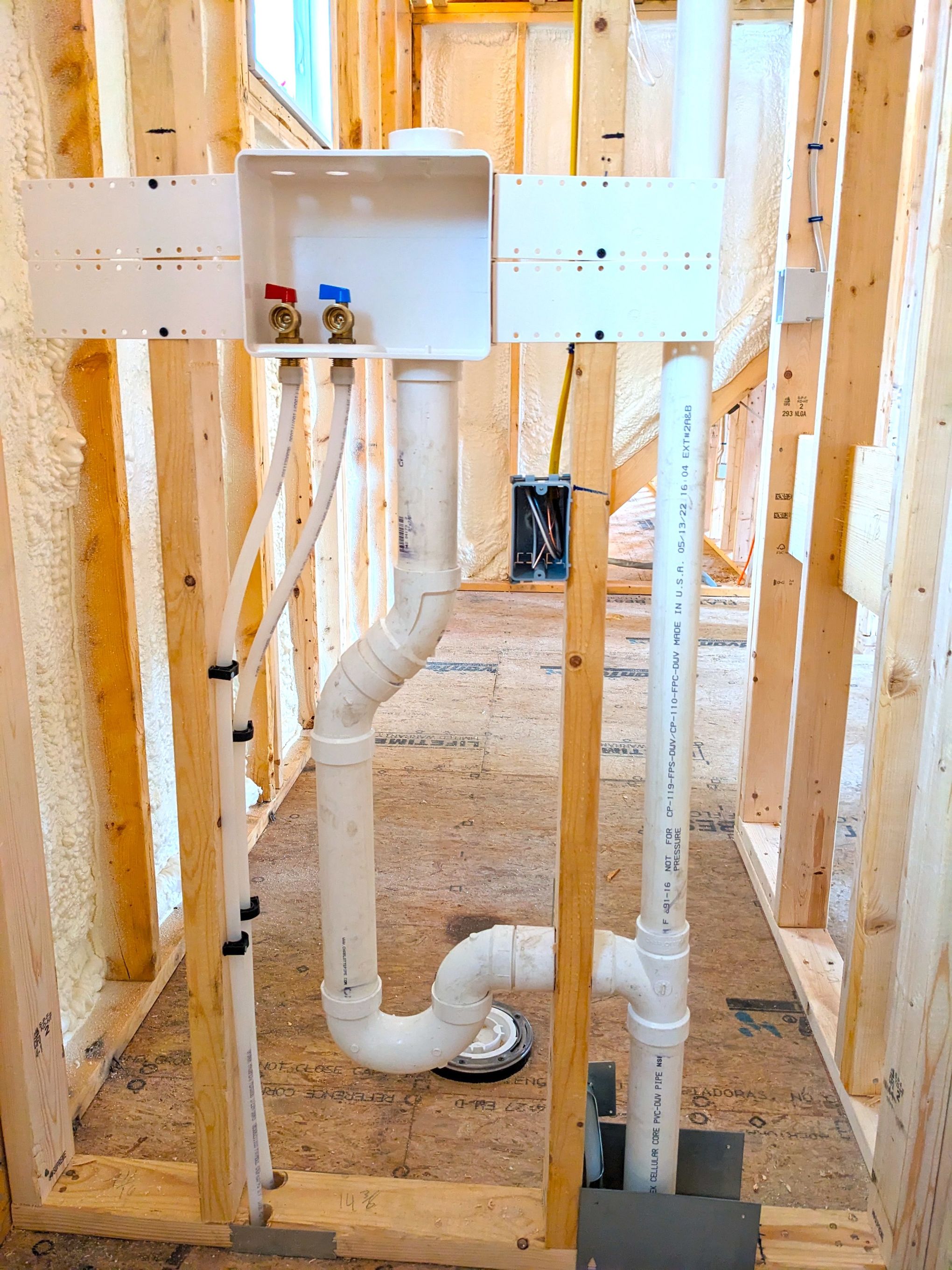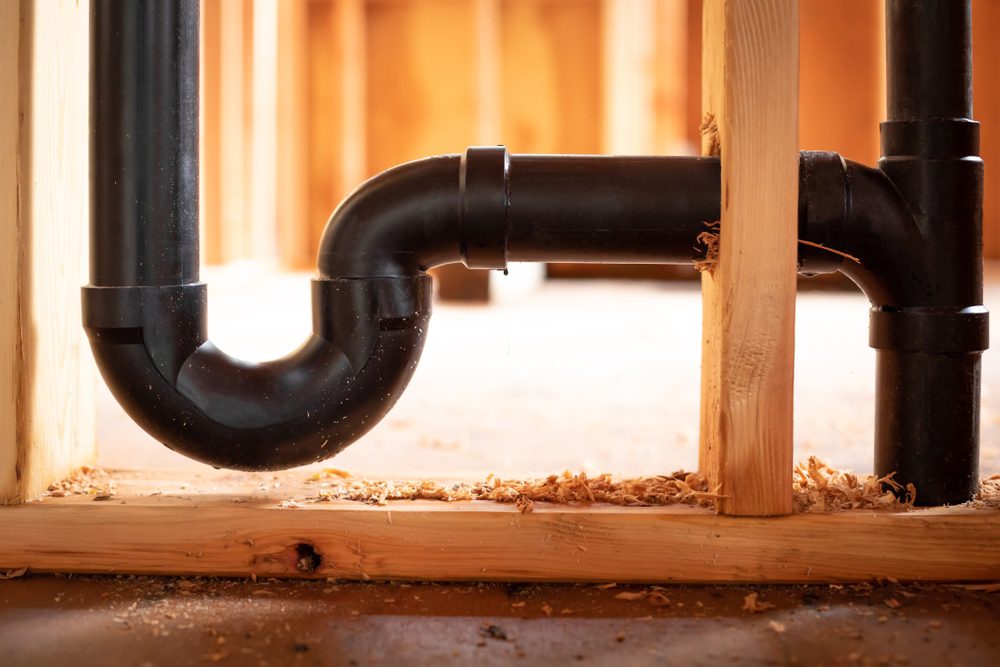The Importance of Proper Ventilation in Plumbing Systems
The Importance of Proper Ventilation in Plumbing Systems
Blog Article
They are making a number of great points on the subject of What Is a Plumbing Vent and Why Is It Important overall in this content down below.

Correct air flow in plumbing systems is frequently neglected, yet it is essential for maintaining the performance and safety of your home's plumbing. Air flow helps regulate atmospheric pressure, avoid the build-up of damaging gases, and make sure the effective elimination of waste. In this overview, we will explore the relevance of proper pipes air flow, just how it works, and the benefits it offers your pipes system.
Recognizing Air Flow in Plumbing
Ventilation in plumbing refers to the network of pipes that enable air to move with the drainage system. These vents serve several objectives, including regulating air pressure within the pipes, avoiding drain gases from getting in the home, and aiding in the smooth circulation of wastewater.
Just How Air Flow Functions in Plumbing Systems
Air Pressure Regulation
Appropriate air flow keeps balanced air pressure within the pipes system. When water flows through pipes, it displaces air. Without adequate air flow, this variation can produce adverse stress, leading to reduce drains or siphoning of water from traps, which can trigger undesirable odors to permeate into the home.
Stopping Sewage System Gas Buildup
One of one of the most important functions of plumbing vents is to avoid sewage system gases, such as methane and hydrogen sulfide, from collecting within the home. These gases can pose major wellness risks and are highly combustible. Vent pipes permit these gases to leave securely outdoors.
Aiding in Waste Removal
Air flow helps in the efficient removal of wastewater by protecting against airlocks in the water drainage system. When air can flow openly with the vents, it enables water and waste to stream efficiently through the pipelines, reducing the threat of obstructions and back-ups.
Kinds Of Plumbing Vents
Key Heap Vent
The major pile air vent, likewise known as the vent pile, is the primary vent in a plumbing system. It prolongs from the main drain align through the roofing system, allowing gases to escape and fresh air to enter the system.
Branch Vent
Branch vents connect to the major stack air vent and offer individual components, such as sinks, bathrooms, and showers. These vents guarantee that each component has ample ventilation to work correctly.
Air Admittance Shutoff (AAV).
An Air Admittance Shutoff (AAV) is a one-way shutoff that allows air to get in the plumbing system without the requirement for a conventional vent pipe prolonging through the roofing. AAVs are generally used in renovations or locations where installing a basic vent is impractical.
Signs of Poor Air Flow in Plumbing.
Slow Draining Fixtures.
If your sinks, bathtubs, or commodes are draining pipes slowly, maybe an indication of inadequate ventilation. Insufficient air flow can create a vacuum cleaner effect, making it challenging for water to drain appropriately.
Gurgling Sounds.
Gurgling noises originating from drains pipes are frequently a result of air being drawn via water catches because of unfavorable stress in the pipes. This is a clear indication of inadequate ventilation.
Undesirable Smells.
Drain odors inside your home are a red flag that your pipes system is not effectively ventilated. This can imply that drain gases are not being effectively aired vent outside, resulting in possibly dangerous conditions.
Usual Ventilation Mistakes.
Poor Vent Sizing.
Using small air vent pipelines can result in inadequate air circulation and stress discrepancies in the system. It's essential to utilize vents that satisfy the particular demands of your pipes system.
Improper Vent Positioning.
Placing vents also much from the components they offer can lower their efficiency. Proper positioning makes certain that air can move easily and efficiently through the system.
Ignoring Code Needs.
Building regulations give certain guidelines for plumbing air flow. Ignoring these codes can cause a system that falls short to operate correctly and might result in pricey repair services or health hazards.
Advantages of Appropriate Air Flow.
Boosted System Performance.
Appropriately ventilated pipes systems operate extra effectively, with fewer clogs, faster draining pipes, and much less stress on the pipelines. This effectiveness prolongs the life expectancy of the plumbing system.
Improved Air Top Quality.
By stopping drain gases from entering your home, appropriate air flow adds to better indoor air high quality, making your living environment healthier and a lot more comfortable.
Preventing Water Damages.
Ample air flow helps prevent water from being siphoned out of catches, which can lead to sewage system gases going into the home and triggering water damages over time.
Actions to Make Sure Correct Air Flow.
Consulting Plumbing Codes.
Constantly seek advice from local pipes codes when creating or changing your plumbing system. These codes supply the necessary standards for correct airing vent and guarantee your system fulfills safety and security standards.
Routine Examination and Upkeep.
Regular inspections can assist identify prospective ventilation issues prior to they come to be significant troubles. Upkeep jobs, such as cleaning vent pipes and looking for obstructions, are necessary for keeping the system in good working order.
Professional Installment.
For brand-new installations or significant alterations, it's a good idea to work with a specialist plumbing. They have the experience to guarantee the air flow system is appropriately developed and installed according to code.
Verdict.
Proper air flow is a crucial component of any kind of pipes system, guaranteeing that it functions efficiently and securely. By understanding the importance of air flow, acknowledging the indicators of inadequate air flow, and taking actions to preserve your system, you can avoid expensive concerns and secure your home's air quality.
4 Things You Should Know About Your Plumbing Vents
What Plumbing Vents Are
Also called a vent stack, a plumbing vent is a vertical pipe attached to your drain line that runs through your roof. The plumbing vent pipe, or plumbing air vent, removes gas and odors from your plumbing system and allows fresh air to enter the pipes, helping the water to flow out of the drain pipes.
What Plumbing Vents Do
Plumbing vents have two basic functions. One of which is to allow unpleasant smelling wastewater and sewer gasses to escape your plumbing system instead of entering your home. Plumbing vent pipes are typically located on roofs, away from windows, to ensure the fumes exit the home completely.
The other function of the plumbing vent is to move fresh air into your plumbing system. This helps move water through every plumbing fixture in your house, like toilets and sink drains. Think of the way in which you need to let a little air into the bottle as you pour soda in order to make the drink flow smoothly.
Different Types of Plumbing Vents
True vent: This is the most common vent option. In simplest terms, a true vent is a vertical pipe attached to your drain line that exits through the roof. They often function as the main vent that other fixtures can connect to. Re-vent pipe or auxiliary vent: Attached to the drain line near specific plumbing fixtures, re-vent pipes run up and over to connect to the main vent. Common vent: Two plumbing fixtures installed on opposite sides of a wall are typically tied into the vent stack using something known as a sanitary cross. Wet vent: This venting option operates as a drain pipe and a vent at the same time. Wet vent drainage systems drain water from one fixture while venting the air from another. Although they’ve been used for over 100 years, wet vent systems have only recently been added to the plumbing code in many areas. If you’re planning on installing one in a bathroom remodel, make sure you check your local code prior to construction. Loop vent: For free-standing fixtures like kitchen island sinks, loop vents are ideal. These vent pipes run under the floor, rise from the P-trap, and create a loop inside the cabinet sink. Air admittance valve: An AAV is a one-way mechanical valve typically installed at the site of the plumbing fixture. AAVs allow venting to occur without having to tie into a larger venting system. They’re ideal for venting fixtures where you aren’t able to easily connect to an existing vent system. Common Plumbing Vent Issues
Although vent pipes typically don’t have water flowing through them, they’re still subject to many typical plumbing issues. For example, clogs are one of the most common problems associated with sewer vent pipes. If your vent pipe gets clogged, all of your plumbing fixtures tied into the vent stack will be affected.
A sink with a slow drain that bubbles and gurgles or a strong sewage smell around your toilet are both indicators that your toilet vent pipe is clogged. Because most vent pipes exit through the roof, old leaves, twigs or even a bird’s nest could be clogging the pipe.
Clogs in your vent pipe system cause a buildup of negative pressure, meaning that water won’t be able to flow out of your home very well. It’s similar to putting your finger over the opening of a straw to trap water inside. When you remove your finger, the water is able to flow out of the straw.
If you suspect you have any blockage in your vent, make sure you have a professional come examine the situation. Left unchecked, a blocked air vent can lead to other costly repairs, like leaks and sediment buildup.
Under Pressure
Pipe vents are essential aspects of a home’s plumbing system. Owning a home means learning about all sorts of things you never put much thought into before. But by understanding as much as you can about the important systems of your home, you can keep those budgets intact and those anxiety levels low.
https://www.homeserve.com/en-us/blog/home-improvement/plumbing-vents/

We had been made aware of that report about Why Plumbing Air Vents Are Important through an acquaintance on a different website. Sharing is nice. You won't know, you could be doing someone a favor. We truly appreciate your readership.
Call Today Report this page